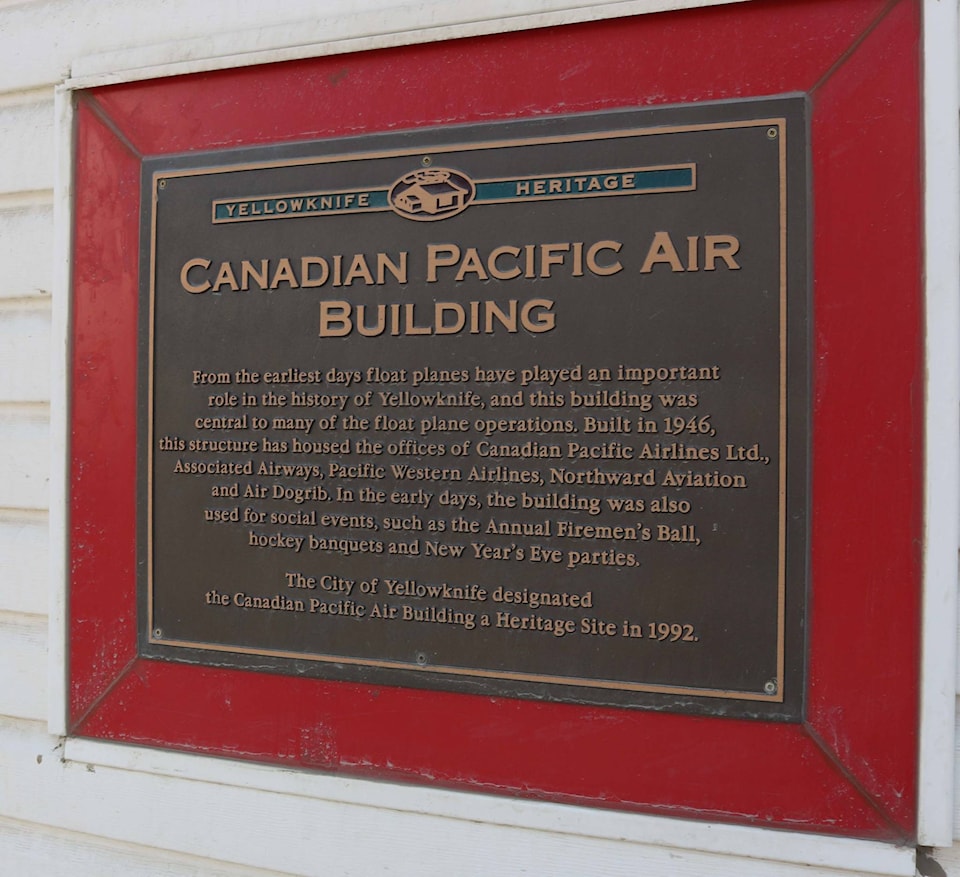Many of the city’s heritage markers are out of date and not in line with the municipality’s aim to equally represent Indigenous history, Coun. Julian Morse said at Monday’s governance and priorities committee meeting.
The discussion came as the city presented its draft Reconciliation Framework and Action Plan which outlines what the municipality has done to work in partnership with neighbouring Indigenous groups and lists what types of work still needs to be accomplished.
Morse, former chair of the city’s heritage committee, said he would like to see some municipal plaques upgraded to ensure it isn’t only a settler’s perspective that is told when displaying the city’s story.
Over the past several months, the city unveiled four heritage information kiosks devoted to Yellowknife’s history, starting with one at the 50/50 lot, which was part of the municipality’s reconciliation effort called the Intercultural and Placemaking Plan. The kiosks are intended to provide a fuller history of the region with a greater perspective from the Yellowknives Dene First Nation.
The “next natural step” from those efforts, Morse said, would be to examine the many heritage plaques the city owns and ensure there’s a balanced and fuller history being told regarding non-Indigenous and Indigenous peoples.
“I would note that virtually all of the heritage committee’s existing plaques, outside of those installed during the Intercultural and Placemaking plan exercise, are pretty outdated,” he said.
Morse made specific reference to three markers at the McMeekin Causeway.
“All of the plaques speak exclusively to settler history, except for the last sentence of one of the plaques,” he said.”So about 95 per cent of the history that’s reported, just in those three plaques, is all settler history.”
Many of the city’s heritage plaques are not that old, either, and in many cases they tell the history of the city with a positive portrayal of mining, as opposed to reflecting a more balanced representation that would include the Yellowknives Dene First Nation’s experience and some of the darker results of nearby natural extraction, according to Morse.
Upgrading the plaques would likely be a multi-year process, given that the kiosks took about five years to complete, he estimated.
Coun. Stacie Smith, the current chair of the heritage committee, said she welcomed the idea of updating the plaques and recognizing that Yellowknife’s history began prior to non-Indigenous settlers arriving.
The idea of plaque updates has come up in early discussions of the reconciliation framework and action plan being developed, she said. It ought to be part of the city’s overall efforts toward reconciliation going forward, she encouraged.
“When we did early community discussions, what came up was the fact that the history of Yellowknife, in terms of anything on plaques or information in books, it only seems that it started when settlers came,” she said.
While some of the plaques are in specific contexts, such as on buildings, Indigenous histories go back further.
“So looking at placement of them, when considering prior to non-Indigenous settlers, maybe we look at the causeway and what the area was used for – maybe it is a different kind of history we delve into.”
The 50/50 lot kiosk in downtown Yellowknife, for example, touches on the fact that caribou once ran along what is now Franklin Avenue.
The draft Reconciliation Framework and Action Plan will be up for a council vote at the June 28 regular council meeting, which may enable city staff to reach out to the public for feedback and ideas for updates. There’s currently no date for formal adoption of the plan.
YKDFN had representatives present during Monday’s committee meeting, including Chief Ernest Betsina of N’dilo, Chief Ed Sangris of Dettah, as well as Lena Black, assistant chief executive officer and Jason Snaggs, chief executive officer of YKDFN staff.
Betsina said he was grateful for the city’s work but that YKDFN is creating its own reconciliation plan. He said he remains committed to working closely with the city’s plan and efforts, too.
“We want our own YKDFN (plan) to be for YKDFN, not for the Metis, not for the Inuit,” Betsina said. “It is YKDFN only. So that’s what we want to work on, and so that’s what we want to bring forward.”
